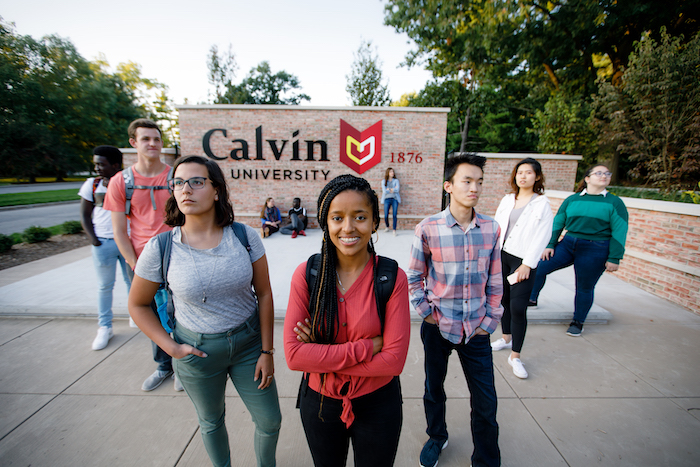Charting a Course to Geographic Information Science

GIS map of terrorism attacks in Madrid and 3-d model a stage
Jason VanHorn tried many majors as an undergraduate, but nothing seemed right. Thinking back, he remembered an occupational report in seventh grade, and the job he had chosen to investigate was cartographer. “It was like a revelation when I remembered that. I suddenly said, ‘Oh, that’s what I’m all about.”
He discovered that his college had a geography and a digital cartography track, and within five minutes of his first course, he knew he had found his path. He graduated with a double major in geography and political science.
After graduation, Jason took a role in campus ministry, where he developed a love of teaching. “It was in ministry that I got a great opportunity to teach,” he explained. “So, when that time ended after five years, I was asking friends and family who knew me well, ‘What should I do next?’ They said, ‘Well, you love geography and teaching. You really need to go for your PhD and be a professor.’”
Focusing on geography and specializing in GIS, Dr. VanHorn earned his master’s degree from Texas A&M University. Then, he went to Ohio State University, where he obtained his PhD in geography, working with Dr. Mei-Po Kwan, the foremost expert in GIS in the world. “She was my advisor, so that experience was very rich and deep for me,” he recounted. “It was during those graduate years that I realized not only do I love to teach, but I love to go deep in research as well. And so those became my two great passions in geography.”
This path led VanHorn to Calvin University in 2007, where he became a professor of geography in the GEO department, which comprises geology, geography, and environment.
As a professor, VanHorn emphasizes how GIS can be applied to real world problems. GIS and mapping technologies are used in nearly every industry.
GIS Applications in Anti-Terrorism Work
One interesting application that Dr. VanHorn and his students have investigated is the use of GIS in anti-terrorism efforts. GIS can be used to mitigate an event that has just happened or stop it before it happens.
“In my work — which I also bring into the classroom— we’re often looking at the historical record of terrorism incidents in a particular place,” said Dr. VanHorn. “Let’s choose Madrid, Spain, for example. Let’s look at the historical events of the political violence in the city and map those incidents.”
VanHorn and his students examine not only the spatial but also the temporal dimensions of when terrorist attacks occurred. “How many people lost their lives? How many people were injured? Using GIS enables us to analyze the data as points on a map associated with time. Then, we can ask questions to understand more about the context of what occurred and the spatial dimensions of the phenomena, so that we can think about protecting people in place now and in the future.”
Dr. VanHorn’s work has explored prevention during high profile events as well. “One that occurred was a celebration for a former president who had passed away. It was a big VIP event, and thousands of people were going to descend on the city,” he said. “My question was, can we use GIS to protect that event? Sure enough, I built a 3D analysis of the stage where the event was to occur. From there, I used viewshed analysis that said, what are all places in a geography sense that can see that place? Then, we’ve covered an entire framework of a geography, where agents tasked with protecting people have a spatial framework from which to work. That saves energy, that saves time, that saves in terms of costs.”
How GIS Is Used to Solve Environmental Problems
GIS is effective at solving environmental challenges, too. For example, GIS specialists can focus on large-scale issues related to the environment, like patterns of climate change or the spread of wildfires. They can also use their skills on local issues with a narrower scope, such as the spatial dimensions of a regional salmonella outbreak.
“When you think about GIS, it illuminates an array of problems ranging from simple to complex because everything has a geography and a space,” explained Dr. VanHorn. “We can use GIS to identify problems, monitor changes, manage events and data, do forecasting and prediction, help in the decision-making process, and understand trends.”
Some examples of how GIS is used related to environmental concerns:
- Disaster management: Early warning systems, modeling, and disaster response.
- Air quality: Monitoring, analytics, and planning to predict and solve air quality issues.
- Forest fire management: Hazard map production and simulation.
- Managing natural resources: Soil erosion, drought, earthquakes, and more.
Professionals with experience in GIS and mapping technologies can play a pivotal role in protecting our environment and society. “GIS provides foundational theory and skills and methods to investigate toward a solution,” said Dr. VanHorn.
How GIS Aids in Business Decisions
Another way GIS skills are used is in business decision making. Dr. VanHorn thinks the link between the two is clear. “Business is linked to geography. We know that the mantra for real estate is location, location, location. That is inherently geography, geography, geography. When you think about business, items are coming from a place, they’re being manufactured in a place, and they have to come to market,” he explained.
There’s also potential for GIS to impact the nonprofit world that Dr. VanHorn thinks could help fill service gaps. “If we pick a program, let’s say an after-school program, we can look at all the nonprofits in the city that have after-school programs,” he said. “And then we can ask where are the gaps? Where are the overlaps? All kinds of possibilities exist with thinking spatially.”
Learn more
These industry areas are just a taste of where students can apply their skills to grow fulfilling careers. GIS is used in almost every industry, from programming to agriculture to healthcare. The possibilities of the impact to be made with strong educational skills are endless.
GIS is a growing field, and Calvin offers one of the only faith-based Master of Geographic Information Science programs in the country. Learn more about geo at Calvin.






